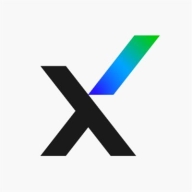

Trellix Network Detection and Response and Check Point SandBlast Network are competing solutions in the network detection and response category. Trellix has an edge due to advanced threat detection features and strong incident response capabilities, while Check Point is noted for its versatile threat handling and AI/ML integration.
Features: Trellix NDR offers advanced malware detection, zero-day threat capabilities, MVX for virtualized execution, and sandboxing technologies. Incident response and deep threat insights are notable. Check Point SandBlast excels in handling various file types, combining signature-based and zero-day threat prevention with robust Threat Extraction and Emulation features.
Room for Improvement: Trellix could improve integration, reporting options, and reduce false positives. Enhanced user customization and cloud integration are needed. Check Point SandBlast requires better support responsiveness, pricing clarity, and more intuitive configuration. Both products need adaptation to changing cyber environments and improved interoperability.
Ease of Deployment and Customer Service: Trellix NDR is primarily on-premises with high customer service ratings for responsiveness. Check Point SandBlast offers hybrid and cloud options with slightly lower service ratings due to support delays and deployment complexity.
Pricing and ROI: Trellix NDR is seen as expensive but justifies cost with effective breach prevention and substantial ROI. Check Point SandBlast, also with a higher cost for advanced features, is competitively priced, offering favorable ROI through comprehensive threat management.
Protecting around 2,000 users from cyber threats, including ransomware, has positively impacted the organization's growth by reducing disruptions and business loss.
I have seen a return on investment since using Check Point SandBlast Network, as it has improved the efficiency of incident handling and saved costs.
Check Point SandBlast Network has saved our money because we don't need to be concerned about security or invest in any sandboxing.
I did get the best from Check Point SandBlast Network's support team; they were very helpful while troubleshooting any kind of issues we faced.
The customer support for Check Point SandBlast Network is great, as the security team has extensive knowledge and provides proper solutions.
In troubleshooting, they are very helpful and knowledgeable.
Technical support needs improvement as sometimes engineers are not available promptly, especially during high-severity incidents.
The scalability of Check Point SandBlast Network meets our organization's needs as we grow.
It is scalable but requires growing the box itself because it is a resource-intensive solution.
The scalability of Check Point SandBlast Network is very nice.
When configured correctly with adequate resources, it functions properly.
Check Point SandBlast Network is stable in my experience, providing proper security to our organization.
Simplification of granular tuning for false positive reduction and bypassing benign files would benefit non-expert users.
Sometimes when we enable a feature in our security gateway, the CPU of the device goes high, so that can be improved.
The customer support for Check Point SandBlast Network could be improved as they are sometimes late with their responses.
There should be improvements in AI intelligence, faster decision-making, and a more responsive technical support team.
Pricing is a bit costly, but considering the features and security offered by Check Point SandBlast Network, it is reasonable.
The key features of Check Point SandBlast Network include its ability to detect zero-day attacks, provide sandboxing capabilities, and offer real-time protection with threat extraction.
The sandboxing method of Check Point SandBlast Network is more powerful than other options because it doesn't present a signature database, so it's not totally relying on the signature but also checks for real-time zero-day attacks and signatures.
The specific security feature that stands out to me in Check Point SandBlast Network is its real-time protection, which extracts, emulates, and blocks traffic if any malicious signatures are present.
Trellix NDR provides an essential defense by automatically responding to network incidents that firewalls may not catch.
| Product | Market Share (%) |
|---|---|
| Check Point SandBlast Network | 4.0% |
| Trellix Network Detection and Response | 5.2% |
| Other | 90.8% |


| Company Size | Count |
|---|---|
| Small Business | 31 |
| Midsize Enterprise | 7 |
| Large Enterprise | 13 |
| Company Size | Count |
|---|---|
| Small Business | 19 |
| Midsize Enterprise | 8 |
| Large Enterprise | 19 |
Check Point’s evasion-resistant technology maximizes zero-day protection without compromising business productivity. For the first time, businesses can reduce the risk of unknown attacks by implementing a prevent-first approach. Learn More about Check Point Sandblast
Detect the undetectable and stop evasive attacks. Trellix Network Detection and Response (NDR) helps your team focus on real attacks, contain intrusions with speed and intelligence, and eliminate your cybersecurity weak points.
We monitor all Advanced Threat Protection (ATP) reviews to prevent fraudulent reviews and keep review quality high. We do not post reviews by company employees or direct competitors. We validate each review for authenticity via cross-reference with LinkedIn, and personal follow-up with the reviewer when necessary.